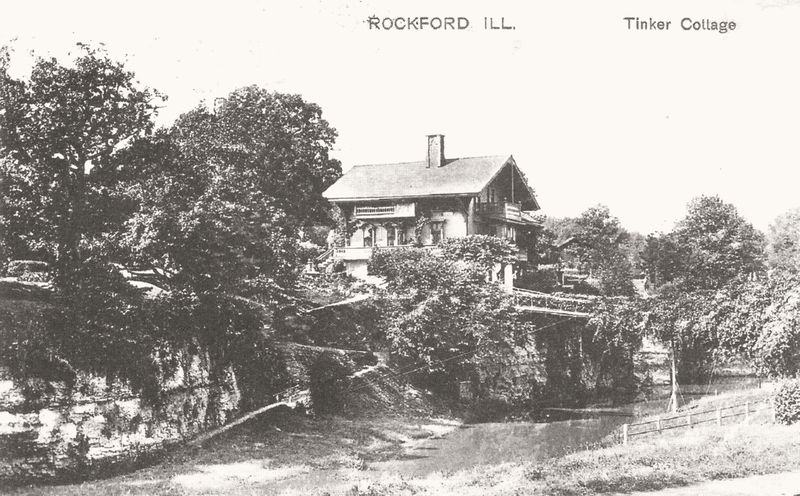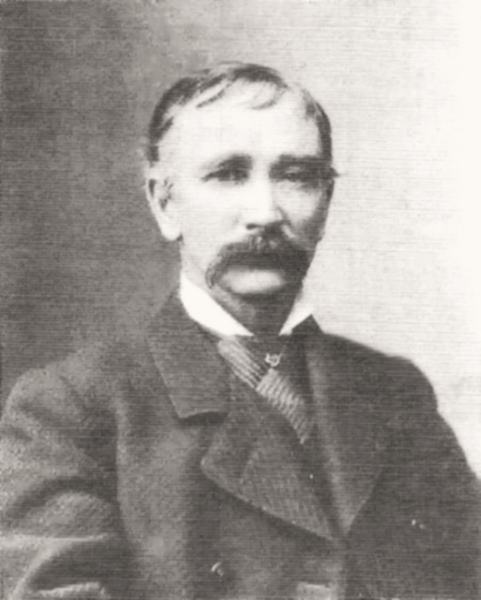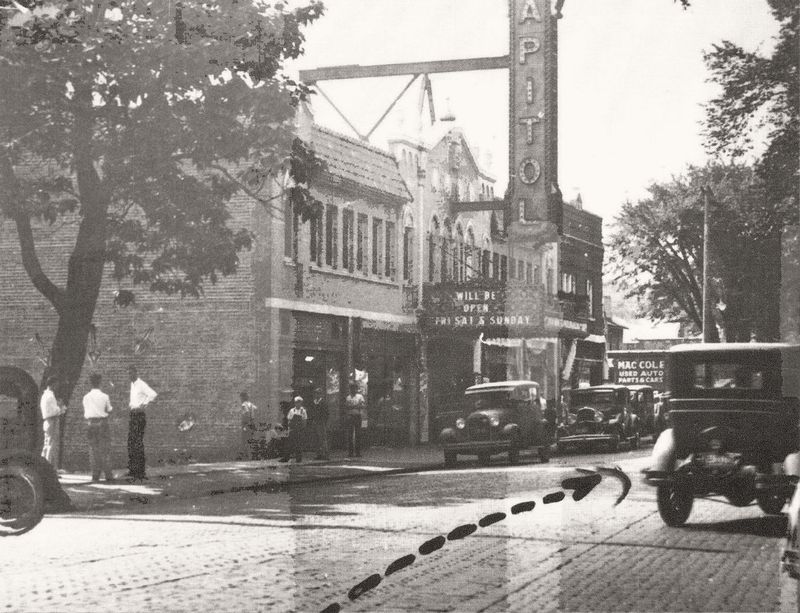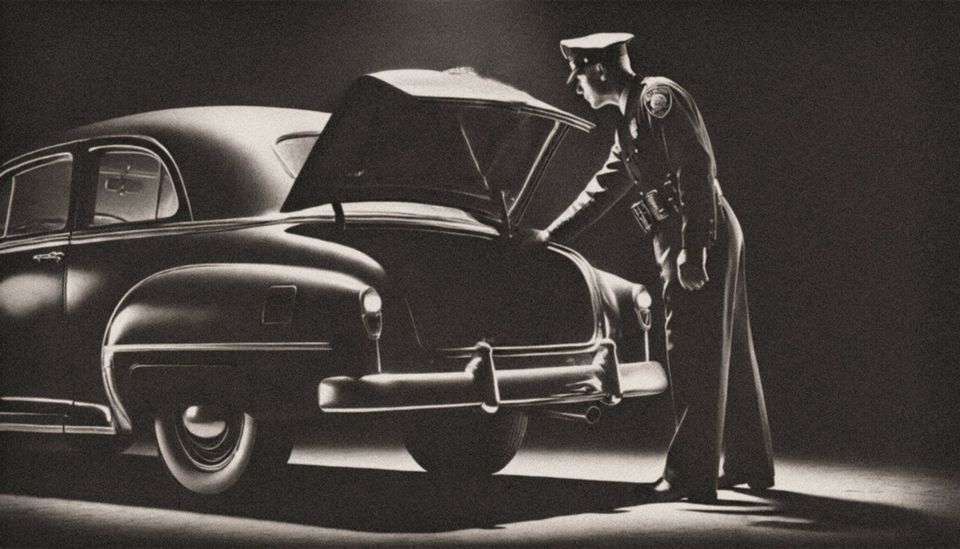Originally published in Haunted Rockford, Illinois (2017) by Kathi Kresol
Tinker Swiss Cottage Museum and Gardens is a beautiful mansion tucked away on Rockford’s west side. Quite a few Rockfordians know it is there, and some of them even know its history. What might surprise people is that the cottage has the reputation of being haunted.
The house is a very unique place for several reasons. It is located on a limestone bluff overlooking the Kent Creek, and there are signs of a definite Native American presence. Water, limestone and Native American influence are all said to be great conductors of paranormal activity
The bluff is located just above where Germanicus Kent, Lewis Lemon and Thatcher Blake landed when they decided to settle this area. It is definitely an important spot in Rockford’s history, both good and bad. The Tinkers sold the land to the railroad, and one of the area’s first cemeteries was once located across the creek from the cottage. The bodies were supposedly moved when the railroad was built. Rumors persist to the contrary, however. These stories state that when family members could not be found, the bodies were left there and the tombstones removed.
The area around the railroad was also a place of violence during the 1920s and 1930s, when there was a large amount of transient traffic as men traveled from place to place looking for jobs. It was right in the middle of the action during Prohibition, and there have been many unfortunate souls that came to a bad end in the area.
But the cottage rests above it all. It is filled with the Tinker family’s possessions. This is not a house that has been decorated with pieces brought in from sales or donations. The Tinker family not only gave the Rockford Park District their house but also included all of their possessions, creating a time capsule of the era when they lived there. They left clothes, dishes, diaries and furniture. This could be another reason why there is so much paranormal activity here.
The cottage was built by Robert Tinker and his wife, Mary. Mary’s first husband was John Manny, who, along with his cousin John Pels Manny, built the Manny Reaper Company. John died young from tuberculosis, and Mary, an extraordinary woman for her times, decided to take over the company after his death.
Mary and Robert Tinker met when he came to work for her company Robert traveled to Europe, and it was there that he first saw the Swiss chalets that he would use in the design of his own unique home. Mary and Robert eventually fell in love and were married.
Robert served as mayor for a year and also became involved in the Rockford Park District. He was a master gardener and surrounded his lovely home with winding paths and beautiful flower gardens. He also built a suspension bridge across Kent Creek to connect with Mary Manny’s grand mansion. After they sold that property to the railroad, Robert designed gardens for the train passengers to stroll through while they waited for their connecting trains.
Mary and Robert had no children of their own, but they did open their home up to several of Mary’s relatives. Josephus Dorr, Mary’s father, became ill and came to stay in the upstairs of the home. It was here that he drew his last breath. Mary’s nieces Marcia and Jesse Dorr came to live with the couple as they attended the Rockford Seminary. Marcia would die in the home, and in 1901, Mary herself became ill and passed away in the house. Hers was one of the several funerals that were conducted in the parlor of the home. Robert designed a very impressive monument for Mary in Greenwood Cemetery in 1902.
Robert and Jesse were left in the home. During this time, a single woman and a man could not live in the same place, so as a matter of convenience, they were married. Jesse devoted her life to helping orphans and would eventually adopt a young son for her and Robert to raise. They named him Theodore. Robert died in 1926 and Jesse in 1942. Jesse gave the house and all of its furnishings to the Rockford Park District to be used as a museum.
Haunted Rockford has visited this unique place for several years now and has enjoyed working with first Steve Litteral, the former executive director, and now current executive director Samantha Hockman. Right from the very first tour, people had experiences they could not explain.
The first time we ever visited the cottage on one of the Haunted Rockford bus tours, we were joined by
a paranormal investigation team. We split the guests up into small groups, and different guides led them through the cottage. As we were loading the bus to head to the next stop, one of the ladies approached me. She told me that she had really enjoyed the tour. She loved that we used psychics,
that we shared the history of the house, that we had the team along and that we had the lady dressed in
clothes from the time period of the Tinkers. This last piece caught my attention, and I asked her what she meant. She explained that when her group was going out on the suspension bridge, they passed a woman with her dark hair in a bun and all dressed in white.
By now we had been joined by others on the tour, and there was a surprised gasp from several of the members when I explained that we had no one dressed up in a white dress. I wasn’t sure who the lady saw, but this mystery woman was not part of the tour. I can’t adequately describe the look on the woman’s face, but I can tell you that it was priceless.
That first encounter was a definite omen of things to come. Almost every time we have organized an event there, people have experienced something unexplained. One other time when we were there with a group, we were upstairs in the “red room” talking about Josephus Dorr, when all of a sudden we heard a woman’s voice from downstairs calling, “Hello?” I turned to Steve and asked if he had locked the doors behind us, and he stated that he had. I told him he better go make sure because we were all upstairs and someone must have come in.
Steve had a very funny look on his face when he joined us a few minutes later. He had checked the doors and found they were locked. He searched the entire downstairs, and there was no one else in the building with us. Everyone who was there that night confirmed that they heard the voice.
I had another rather startling experience in the cottage. I was going into the house during one of our public investigations to make sure all was well. I entered the basement from the outside door and was speaking to Sara Bowker, one of the psychics who assist with Haunted Rockford Events. She was explaining to me that there was a ghostly servant girl that was rushing up and down the stairs, apparently trying to serve dinner. As she said this, I was standing at the bottom of the stairs that went between the basement and the upstairs kitchen, and I saw movement from the corner of my eye. I turned to look up the stairs and saw the back portion of a lady in a long blue-patterned dress. I was quite startled and turned to look at Sara. She asked, “Did you see her?” I was astonished and must have shown it because my expression made Sara laugh.
At another paranormal investigation, there was a team member who happened to be in the basement. Mr. Tinker did not seem to like this person. I’m not sure if he was using provoking methods, but toward the end of the evening, one of the participants caught a very clear EVP on his digital phone. I heard the voice recording minutes after this incident took place. The hair on my arms raised when I heard a man’s voice clearly state, “Get out.”
There have been many incidents reported since by guests. They have heard children playing, been touched, noticed whistling and humming, and seen many full-bodied apparitions. In fact, the cottage has so much activity that it was featured on the Ghost Hunters show a couple of years ago.
During a tour right around Halloween, we had a number of people on the second floor. Steve Litteral was in Robert Tinker’s room while I was in what is now called Mary Tinker’s room. Suddenly, the lights shut off, and we were plunged into complete darkness. I had been co-hosting events in the building for years at this point and this had never occurred before. Steve went down to the basement in an attempt to determine what had happened. There were several members from a paranormal team attending the tour with their equipment. One of the young ladies that had joined us for the tour suddenly started to scream. I was in the same room and tried to maintain calm as I questioned her about what she was experiencing. She stated that something had touched her. I turned my flashlight on and saw that she was alone in the corner, eliminating the possibility of someone from the group having touched her.
It was at this moment that the lights came back on, and the girl stepped away from the corner she had been standing in. The investigators moved in with their equipment to see if they could detect any unusual readings. One of the men held an EMF detector, and when he stepped into the corner, his meter went off to indicate that something was causing the electromagnetic field in the room to spike higher. Some investigators believe that spirits manipulate energy in order to communicate and that these EMF detectors will signal when that is happening. Though most of the other participants were thrilled by the experience of that evening, the young girl was so shaken that she left the tour immediately.
The Tinker cottage has developed quite a reputation for being haunted over the years. Tinker Cottage still offers many events and invites Haunted Rockford to attend quite frequently. The paranormal investigations hosted for the public are always popular events and allow everyone who attends the chance to work with different paranormal teams to experience an actual investigation.
Some of the events have included psychics, and they all seem to agree that the Tinker family is still as much a presence today as ever in this home they were so proud of. There were no murders or suicides that took place here. They are just a family who loved their home and who still continue to occupy it.
They can get a little nasty when they are ready for their guests to leave, however. There have been reports of them throwing items at people. One story involved a young man who was in charge of a paranormal team at the time this story took place. He was exploring different techniques for this particular investigation. One thing he did prior to the start of the investigation was place several pennies around on different surfaces. Only he knew the year that was displayed on each of the pennies. He did this to ensure that no one else could sabotage his experiment.
He was investigating all alone in the house and decided to use some provoking techniques. He began making some not very polite comments about the family and their home while walking around in the downstairs portion of the library. Suddenly, he got a feeling that he was no longer welcomed in the room or the entire house, for that matter. He decided that it might be a good time for a break and walked through the house to leave by the kitchen door. Just as he reached the door, a penny sailed into the wall right by his head. He stated later that he scooped up the penny and tried to open the door. It didn’t open for a minute, and all the time, a heaviness was filling the room. By the time he got the door open and made it outside, he was very unsettled and shaking. He claimed that even though he did not normally smoke, he asked one of his teammates for a cigarette.
When he checked the date on the penny that flew at his head, he discovered it was the one he had placed in the upstairs portion of the library. The penny had somehow traveled down a flight of stairs and around several corners before slamming into the wall next to his head. The staff at the cottage no longer allows provoking techniques to be used during investigations. The staff have had several of their own experiences that they cannot explain. These experiences are usually playful in nature, except for a few times after a public event.
The Tinkers did so much for Rockford between their business and other pursuits. Their unique house still brings travelers to Rockford over 150 years after it was built. The fact that their spirits linger inside these walls is definitely a story worth sharing. I am often asked which haunted place in Rockford is the most active, and I have to say that Tinker Swiss Cottage Museum is definitely one of the top locations. Perhaps Robert himself put it best when he used a quote from a poem of Thomas Campbell on Mary’s headstone. It reads, “To live in the hearts we leave behind is not to die.”
Copyright © 2017, 2025 Kathi Kresol, Haunted Rockford Events































